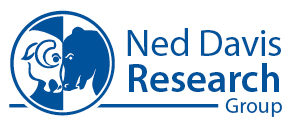
| Product: |
Indexes of Leading, Coincident and Lagging Indicators (Monthly % Changes) - E0010
|
| Run Date: |
2025-06-20 |
| Update Frequency: |
Monthly |
Explanation Guide
Economic
Chart Watch
LEI, CEI, AND
LAGGING INDEX
The Conference Board's
Leading Economic Index (LEI), Coincident Economic Index (CEI), and
Lagging Economic Index (Lag) are composite averages of individual
economic indicators designed to capture turning points in aggregate
economic activity better than any individual component.
Historically, turning points in the LEI have preceded those in the
aggregate economy, while turning points in the Lag have occurred
after those in the aggregate economy. The ratio of CEI to
Lag, the Co/Lag, is an
alternative leading index. The indexes are released
around the 20th of each month with data for the previous
month.
Leading Economic Index
components:
- Average weekly hours -
manufacturing
- Average weekly initial jobless
claims
- Manufacturers' new orders - consumer goods and
materials
- ISM New Orders Index
- Manufacturers' new orders - nondefense capital
goods ex aircraft
- Building permits - new private housing
units
- Stock prices - S&P 500
- Leading Credit Index
- Interest rate spreads - 10Y Treasury bonds less
federal funds
- Average consumer expectations for business and economic
conditions
Coincident
Economic Index components:
- Employees on nonagricultural
payrolls
- Personal income less transfer
payments
- Industrial production
- Manufacturing and trade sales
Lagging Economic Index
components:
- Average duration of
unemployment
- Inventories to sales ratio - manufacturing and
trade
- Labor costs per unit of output -
manufacturing
- Average prime rate
- Commercial and industrial
loans
- Consumer installment credit to personal income
ratio
- Consumer price index for
services
The NDR Composite
Leading Index is an equal-weighted average of the LEI and
Co/Lag. It reduces some of the emphasis on monetary variables
which could skew the LEI, particularly in times of large and
extensive quantitative easing, as in the aftermath of the 2008-2009
recession and financial crisis. It shows a leading tendency
to real equipment and software spending growth and corporate
profits growth.
Back to top
